Remembering Australia’s contribution to D-Day, 80 years on
On the 80th anniversary of D-Day, when Allied forces stormed Normandy to reclaim Nazi occupied Europe, the little known stories of the Australian soldiers who fought are being celebrated

READING LEVEL: ORANGE
“I wish the Australians were with us” – these were the words of a British general as the Allied forces stood ready to launch the greatest seaborne invasion in history.
This week marks the 80th anniversary of the D-Day landings, when British, US and Canadian forces landed in Normandy, France in the first step towards freeing Western Europe from the Nazis in WWII.
Knowing that the D-Day landings would be a tough fight, on the night of June 5, 1944, Major-General Francis “Freddie” de Guingand, is said to have wished the renowned Aussie 9th Division, legends of Tobruk and El Alamein, was on hand to help.
But Australia’s infantry were by then fighting closer to home and most of the extraordinary beach and air attacks on June 6, 1944, were carried out by British, US and Canadian divisions.

But Aussies were most certainly there. About 3300 served on that “day of days” and thousands more in the weeks before and after – a fact that isn’t well-enough known, said Australian War Memorial senior historian Dr Lachlan Grant.
“Traditionally there has been a sense that it wasn’t much of an Australian story,” Dr Grant said of Operation Overlord, the battle for Normandy in Northern France. “But there is a large Australian story there – we just needed to find out who the people were.”
He and fellow historians have found the names and stories of all those Australians who helped – a challenging job since most were serving on attachment to British forces instead of being in all-Aussie units.
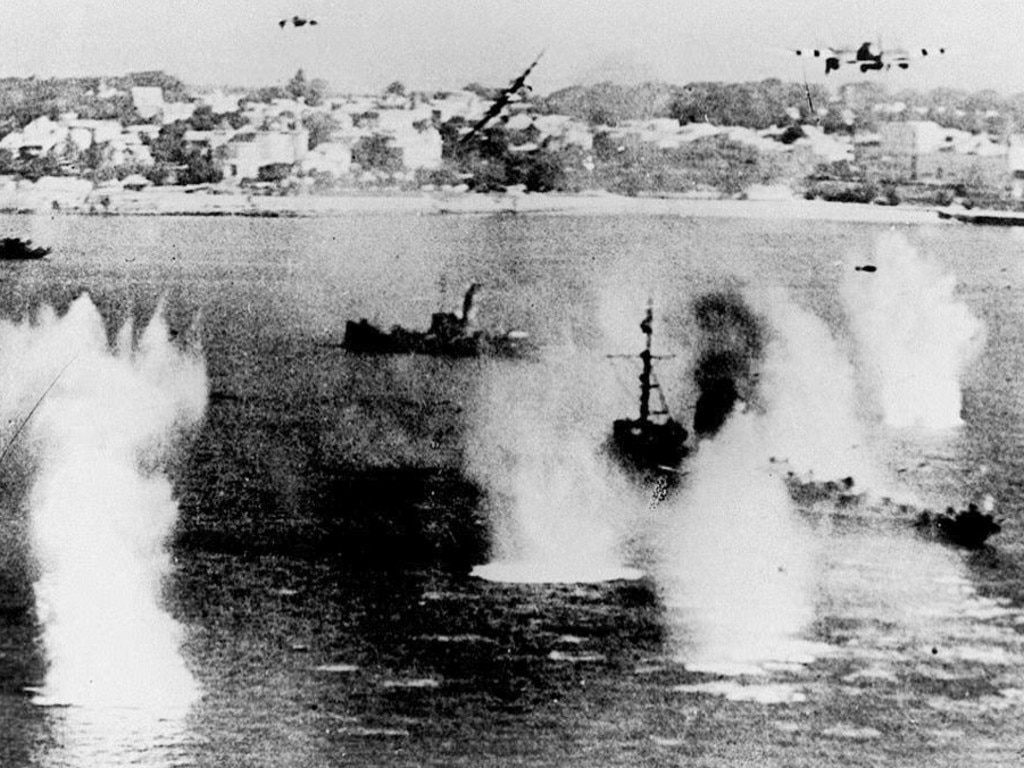
The largest body of Aussies involved were airmen: bomber crews pounding enemy defences for weeks before the invasion. On D-Day itself, fighter pilots and ground-attack crews plus transport crews played a crucial role in the Allies’ victory.
By July 1944, there were around 14,000 Aussie air force personnel based in Britain. On June 6 alone, around 1000 flew missions with Royal Australian Air Force (RAAF) squadrons and 1800 with the British Royal Air Force.

Sadly, about 16,000 were killed over the period.
“We often note that about 12 Australian airmen died on D-Day and two sailors died on D-Day,” said Dr Grant. “But that was just the first day of the campaign. These months in 1944 that encompass D-Day were the worst in terms of the highest casualties for the Royal Australian Air Force for all of the Second World War. Well over 1000 Australian airmen were killed in the skies above Europe during this period, both before and after.”
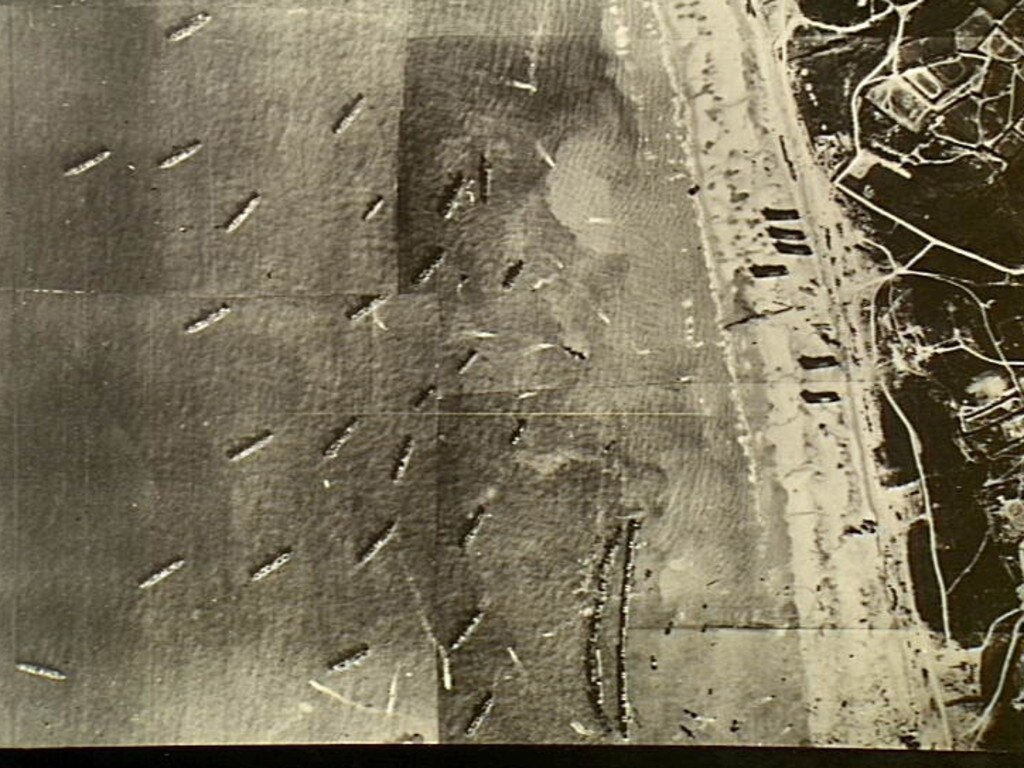
Between April and August 1944, 1978 RAAF fighters were killed.
On the ground, nearly 37,000 Allied soldiers died between June and August, including 2500 killed on D-Day itself. All up there were 425,000 Allies and Germans killed, wounded or captured. An estimated 15-20,000 French civilians also died.
Australian infantry were mainly involved in fighting against the Japanese by 1944 and were fortunate to avoid the D-Day invasion in large numbers, Dr Grant said.
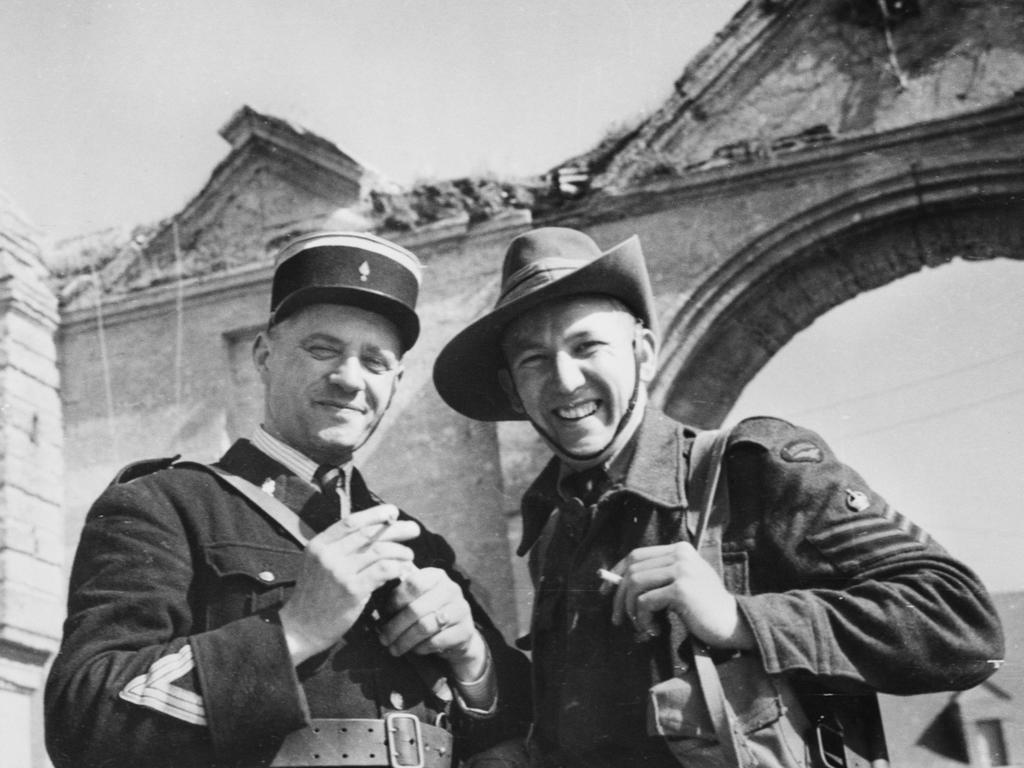
Yet there was a handful of Australian Army soldiers on the ground – thirteen officers sent to watch and learn from the D-Day landings in preparation for assaults against Japanese-held territories closer to home.
Among them was Major Henry “Jo” Gullett, a decorated veteran of North Africa, who quickly jumped in to help, despite being there supposedly just to watch.
“He was sort of there to observe at the start, but as casualties mount up, he’s serving officer, so he takes command of a British unit,” said Dr Grant.
His experience echoed that of another D-Day Aussie at another legendary landing.
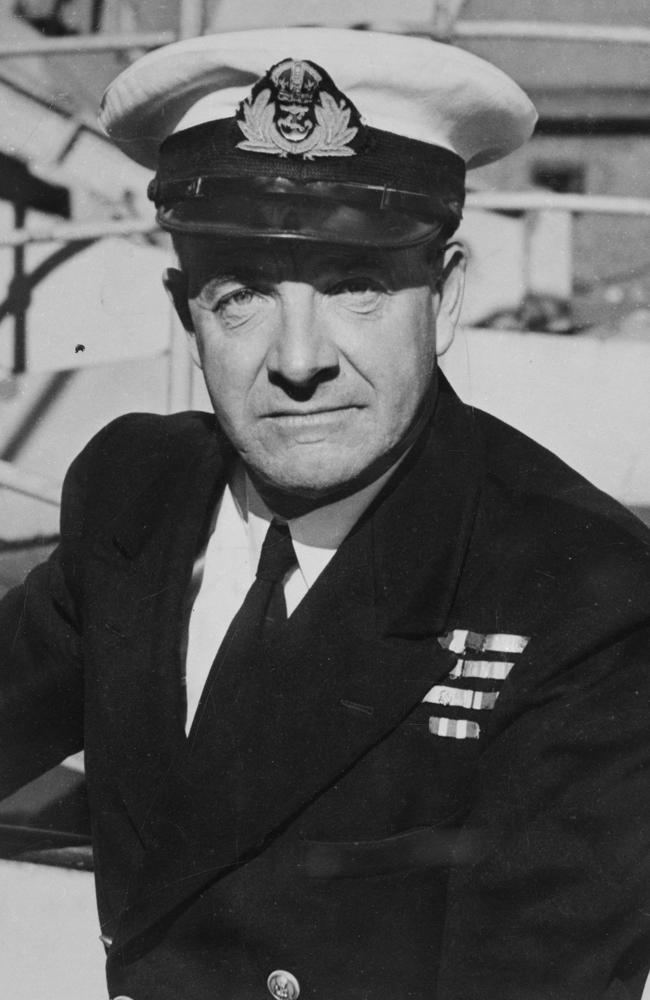
Tasmanian George Dixon was an original ANZAC who landed at Gallipoli on April 25, 1915. He was just 15, having enlisted underage. Days later he received multiple gunshot wounds and was sent back to Australia injured.
In 1940, Dixon enlisted once again, this time in the Royal Australian Navy. By D-Day he was a lieutenant-commander, in charge of one of the tank landing ships supporting the Canadian landings on Juno Beach.
Dixon was one of around 500 Australian sailors in action on D-Day. The extraordinarily complex seaborne operation, named Operation Neptune, was the key to success in Overlord.
MEET OVERLORD’S EXTRAORDINARY AUSTRALIANS
Meet these six extraordinary Australians who were there on D-Day and were involved in the battle for Normandy.
ROYAL AUSTRALIAN NAVY
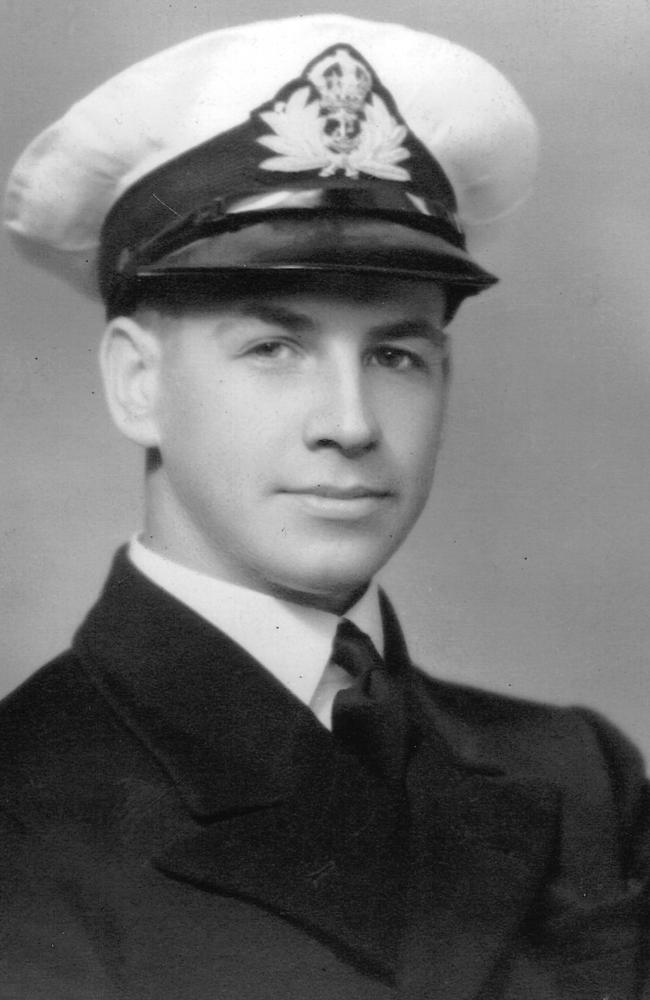
Lieutenant Commander Ken Hudspeth (Royal Australian Naval Volunteer Reserve)
A Tasmanian schoolteacher before the war, Ken Hudspeth was a much-decorated commander of midget submarines. Hudspeth commanded submarine X20, mooring it off Juno Beach to guide landing craft to the beach. For this daring mission, he was awarded a second Bar to his Distinguished Service Cross (DSC).
SERVING WITH BRITISH FORCES
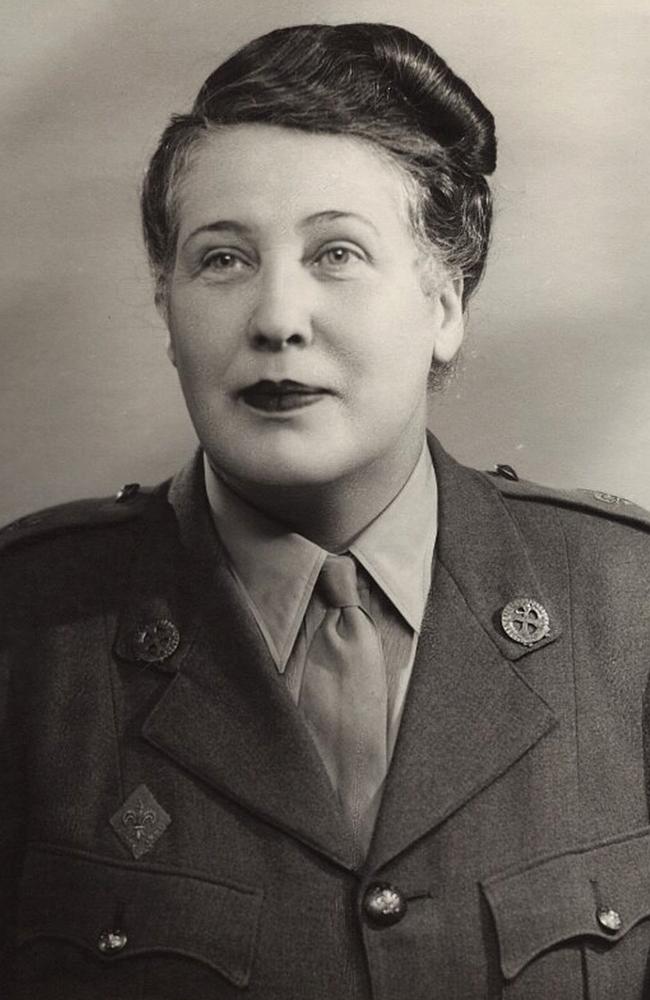
Senior Commander Olive Sherington
Sydney’s Olive Sherington was “an incredible person,” according to Dr Grant. As a British nurse in WWI, she met an Australian officer and moved Down Under. Her husband died in 1939, so she took a holiday to Europe and was in England when war broke out later that year. She was one of the last British servicewomen to leave France after the evacuation of Dunkirk in 1940 – saving 14 wounded soldiers who were in her truck – and she was one of the first to return, driving her vehicle ashore at Normandy as a senior commander just a few days after 6 June, 1944.
SECOND AUSTRALIAN IMPERIAL FORCE

Major Henry “Jo” Gullett
One of 13 AIF officers attached to the British Army for the landings, veteran fighter Major Henry “Jo” Gullett was at D-Day to watch and learn before being sent to fight against the Japanese. Being an observer did not stop him fighting – he was wounded in an assault in July while attached to the Scots Guards, eventually rejoining the unit in the Netherlands.
ROYAL AUSTRALIAN AIR FORCE
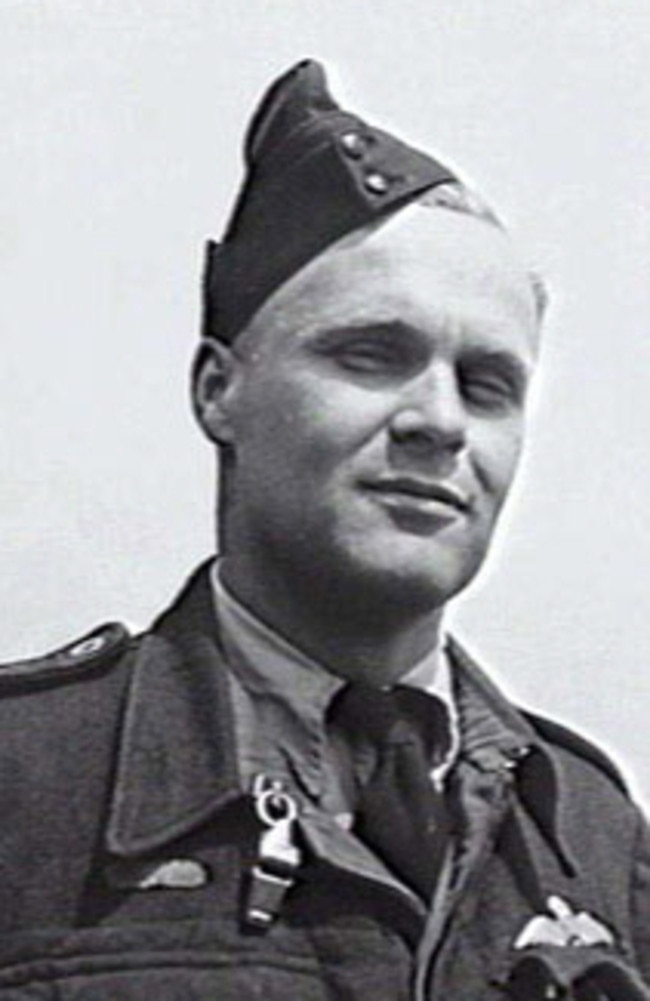
Flight Sergeant Leslie Gilbert
As an RAAF pilot serving on attachment to the RAF, for D-Day he piloted a Stirling aircraft carrying British paratroopers of the 6th Airborne Division to their landing zones in Normandy. Gilbert’s aircraft was shot down over the dropzone in France, killing him, his fellow five crew members, and nine of the 20 soldiers on board.
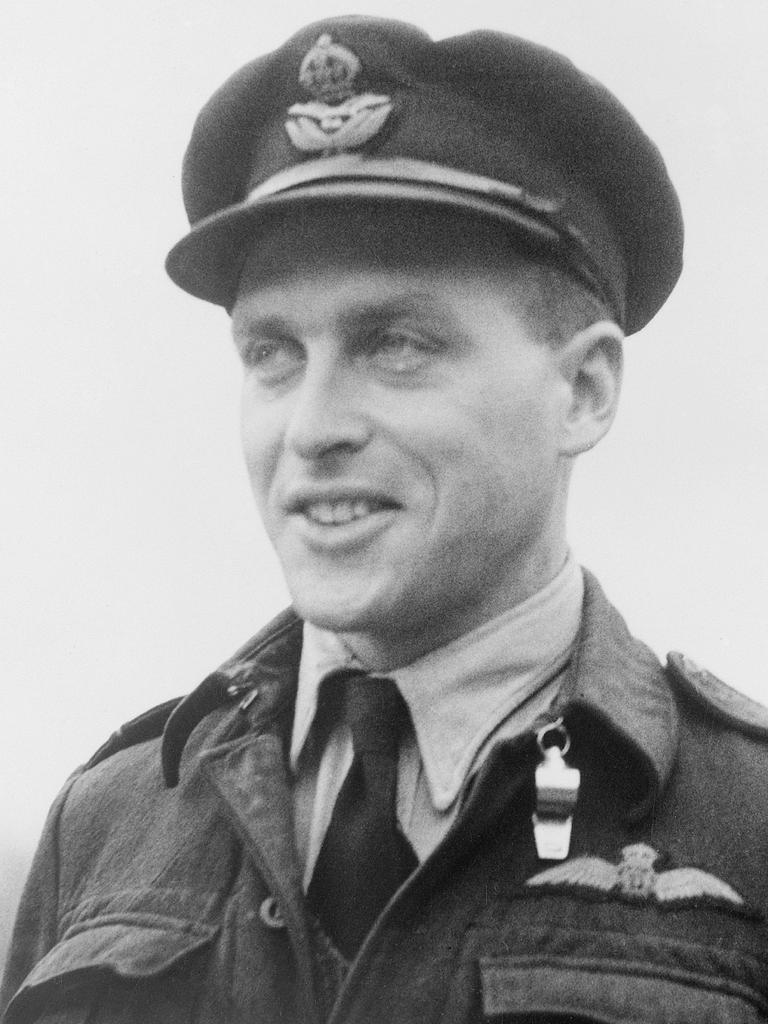

Squadron Leader Arthur Oxlade and Flight Lieutenant Donald McKenzie Shanks
Squadron Leader Arthur Oxlade from Box Hill, Victoria, was a De Haviland Mosquito pilot with No. 464 Squadron RAAF. On the night of 5 June 1944 his fighter-bomber was hit and 24-year-old Oxlade was killed. His navigator, fellow Victorian Donald Shanks, survived but landed far behind enemy lines. He spent the next three months hidden from the Germans by French civilians, much of the time pretending to be a farm labourer, before Allied forces finally arrived in the area. He rejoined the force and survived the war.
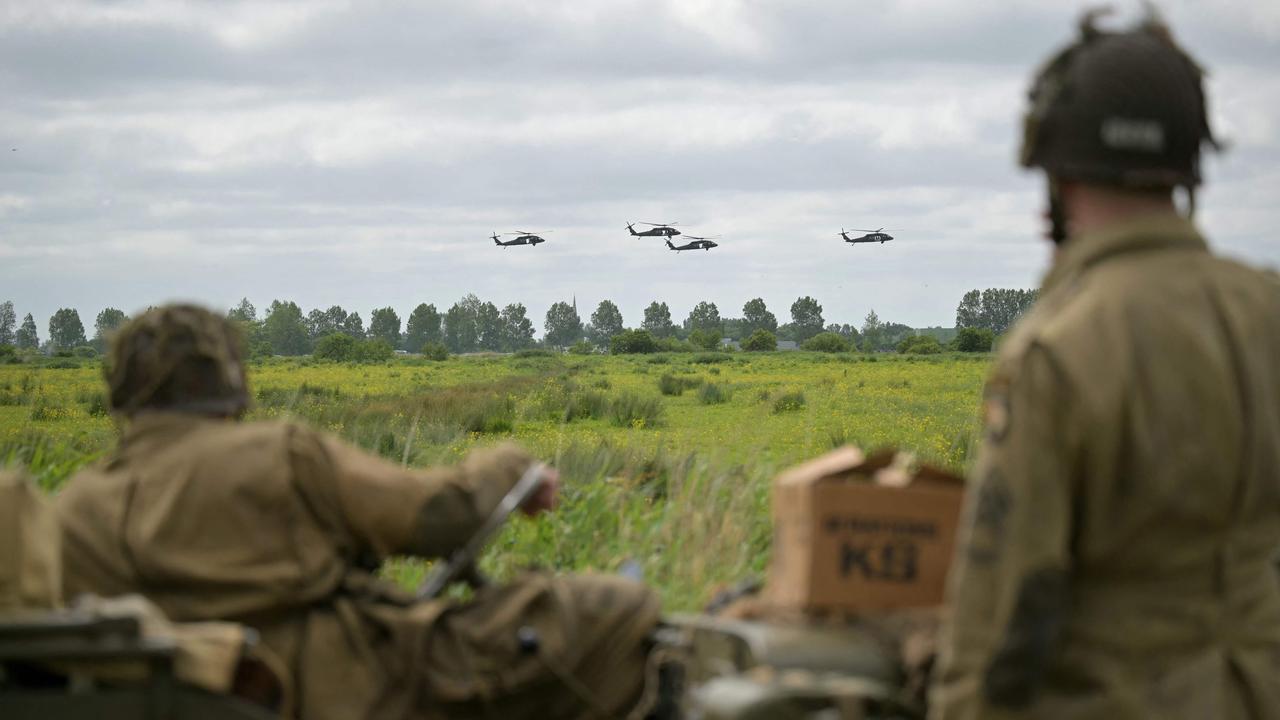
MARKING 80 YEARS SINCE D-DAY
Veterans and world leaders will meet in Normandy, northwestern France, on June 6 to mark the 80th anniversary of the 1944 D-Day landings, when more than 150,000 Allied soldiers invaded France to drive out the forces of Nazi Germany. With surviving veterans now older than 100, this could be the last anniversary many will see.
The Governor-General of Australia, the Honourable David Hurley will attend ceremonies in Normandy as a representative of Australia.
Ukrainian President Volodymyr Zelenskiy will also be among the guests. Russia – which launched a full-scale invasion of Ukraine in 2022, starting Europe’s biggest armed conflict since World War II – was not invited.
Here’s how survivors and leaders will commemorate the historic event.

– Australian veterans and their relatives will travel to Normandy to mark the anniversary and pay respect to those who lost their lives. The Governor-General of Australia, the Honourable David Hurley, will also attend
– The Australian War Memorial will hold a Last Post Ceremony commemorating the 80th anniversary of D-Day on June 5 and paying tribute to RAAF pilot officer Colin Douglas Bell who died while fighting in Belgium in September 1944
– A special lunch will be held in Sydney featuring former Attorney-General George Brandis KC
– French President Emmanuel Macron will hold three days of visits and speeches, from June 5-7. On the 5th, he will be in Brittany and Normandy, with visits that include the town of Saint-Lô, which was destroyed by Allied bombardments.
– Also on June 5, British army paratroopers will recreate a drop into the fields of Normandy, watched by three veterans. A British ceremony at the Bayeux War Cemetery will be attended by D-Day veterans and their families.
– On June 6, the 80th anniversary of D-Day, Ceremonies will be held at the British Normandy Memorial in Ver-sur-Mer, in the presence of King Charles. Canada will hold its own ceremony at 0900 GMT, attended by Prince William.
– At around 1000 GMT, Biden will lead a US ceremony in the presence of D-Day veterans.
– At 1300 GMT, President Macron will lead an international ceremony at Omaha Beach, where US forces suffered their greatest casualties in their fight against the Germans.
POLL
GLOSSARY
- D-Day: when more than 150,000 Allied forces invaded France to drive out the forces of Nazi Germany – the largest invasion by sea in history and a turning point in the war that marked the beginning of the end for the Nazis
- on attachment: temporarily assigned to another squadron
- Allies: the Allied forces included Great Britain, France (before it was occupied by Germany), the Soviet Union, the US and Australia
- midget submarines: very small submarines, usually operated by a crew of one or two, that were used in WWII
- dropzone: the area in a war zone where parachuters were dropped into
EXTRA READING
Aussie hero’s WWII Great Escape
Last Dunkirk veteran dies at 102
100-year-old WWII digger delights school kids
QUICK QUIZ
1. When was D-Day?
2. How many Australians were there?
3. This year’s anniversary marks how many years since D-Day?
4. What does Operation Overlord refer to?
5. Which European country wasn’t invited to this year’s D-Day commemorations and why?
LISTEN TO THIS STORY
CLASSROOM ACTIVITIES
1. Different perspectives
What do you think British Major-General Francis “Freddie” de Guingand might have known or experienced to wish that Australian troops were on hand before the D-Day landings 80 years ago?
What would you need to learn about to understand his perspectives better?
What do you notice about your own perspective and what it takes to takes to take somebody else’s?
Time: allow 20 minutes to complete this activity
Curriculum Links: English, Personal and Social, Critical and Creative Thinking
2. Extension
How were Australians represented in the D-Day landings in France?
Time: allow 15 minutes to complete this activity
Curriculum Links: English, History, Critical and Creative Thinking
VCOP ACTIVITY
Reflecting on the role of Australians in D-Day
Objective: To help students understand and reflect on the contributions of Australians during the D-Day landings and World War II.
Read aloud and discuss:
Read the article aloud to the students or have them take turns reading sections of the article.
Pause after key points to discuss and ensure understanding. For example, ask questions like:
- What was D-Day?
- Why did Major-General Francis de Guingand wish the Australian 9th Division was present?
- How were Australians involved in D-Day?
Reflective writing:
Ask the students to write a short reflection on one of the following prompts:
- Imagine you are an Australian airman or sailor on D-Day. Write a diary entry about your experiences and feelings on that day.
- Write a letter home as if you were an Australian soldier observing the D-Day landings. Describe what you saw and how you felt.
- Reflect on why it is important to remember the contributions of all nations, including Australia, in significant historical events like D-Day.
Drawing and sharing:
After writing, have the students draw a picture to accompany their reflection. This could be a scene from D-Day, an Australian soldier or airman in action, or a symbolic representation of the contributions of Australians during the war.
Once the students have finished their drawings, have them share their reflections and drawings with the class. This will help reinforce their understanding and allow them to practice their oral communication skills.

